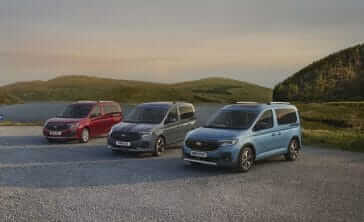Space and practicality
One of the key areas of interest with a seven-seat SUV is space, and while you do get an extra pair of seats in the boot, it’s not as roomy as some of the competition.
With all the seats in place, there’s 230 litres of boot space available, which grows to 700-litres with the third row folded down, and when all the rear seats are folded flat this grows to 1,775-litres.
Up front there’s ample room for tall drivers and passengers and it’s much the same case in the middle row too, even if you opt for the panoramic sunroof. Plus, the middle seats cam recline too, should those passengers fancy a little nap on route.
The third row of seats though are pretty poor, space-wise though. They’re really only suitable for children, and some of the rivals out there, like the Kodiaq, offer much more space.
Engines
There are five powertrains available from launch, which includes two petrol and three diesels, and while there were no hybrids available from the start, a plug-in hybrid version is planned for later in 2020.
On the petrol front, from there’s a manual 1.5-litre TSI unit with 148bhp as well as a four-wheel drive 2.0-litre TSI engine with 187bhp. The latter being available with a manual or DSG gearbox. The lower-powered petrol unit is, unsurprisingly, the cheapest in the range, and while it’s suitable for town driving, it does feel a little underpowered when it’s fully loaded with people or luggage. Having said that, it’s still a good all-rounder and for many will make most sense, especially with its lower running costs.
Diesel-wise, there’s also two which also offer the same power outputs. Both are 2.0-litre units with either 148bhp (TDI 150) or 187bhp (TDI 190), the former doing the 0-60mph dash in a respectable 9.8 seconds and a top speed of 128mph. The power difference in both is quite noticeable with plenty of low-down pull.
Running costs
It’s no surprise to hear the diesel is the most economical option offering around mid-40mpg in front-wheel drive manual, reducing to around 40mpg for the four-wheel drive automatic.
On the petrol front, you should get between 29mpg and 32mpg, which isn’t really what you’d consider frugal. The problem with the petrol is the larger unit gets the four-wheel drive system and bigger alloys, with affects the ride, refinement and economy.
If you’re willing to wait, the introduction of a plug-in hybrid will make the Tarraco a much cheaper model to run – especially if you do predominantly shorter journeys and are able to charge at home or work. This version will also be the cheapest in company car tax, thanks to its low emissions.





